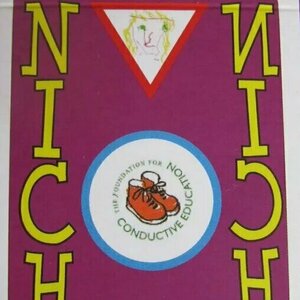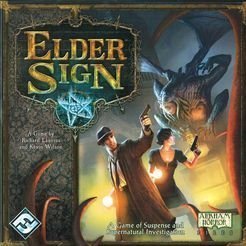Search
Search results
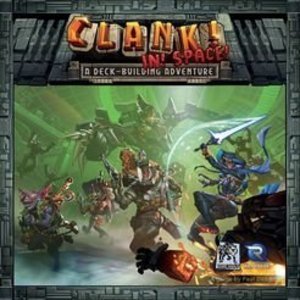
Clank! In! Space!
Tabletop Game
The evil Lord Eradikus has all but conquered the galaxy and is now on a victory lap across the...
Boardgames 2017Games PressYourLuckGames
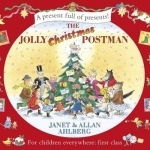
The Jolly Christmas Postman
Allan Ahlberg and Janet Ahlberg
Book
It's Christmas Eve and the JOLLY POSTMAN is delivering greetings to various fairy-tale characters -...
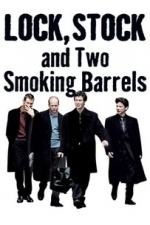
Lock, Stock and Two Smoking Barrels (1999)
Movie
A botched card game in London triggers four friends, thugs, weed-growers, hard gangsters, loan...

Abandon All Artichokes
Tabletop Game
Abandon All Artichokes isn't your garden-variety card game! A bumper-crop of prickly produce has...
Matthew Krueger (10051 KP) rated Elder Sign in Tabletop Games
Jul 17, 2020 (Updated Jul 18, 2020)
The Theme (3 more)
Solo Gameplay
The Setting
High Replayabity
Little Pieces, Easy to lose (1 more)
Luck of the dice
Call of Cthulhu
Elder Sign- is a excellent fantasy adventure, horror card game. I learn about this game through Tabletop. And to me it looked really good. And plus you can play it solo. So i had to buy it, cause of the solo experience. I only played this solo and its fun, but hard to win. I love the theme of the game which is based on the Cthulhu Mythos of horror writer H.P. Lovecraft and Chaosium's Call of Cthulhu roleplaying game. I love both H.P. Lovecraft, and Cthulhu. If you don't know what Elder Sign is I will explain it.
Elder Sign- is a cooperative card and dice game, based on the Cthulhu Mythos of horror writer H.P. Lovecraft and Chaosium's Call of Cthulhu roleplaying game. It is published by Fantasy Flight Games, which also produces the Cthulhu Mythos games Arkham Horror, Call of Cthulhu: The Card Game, Mansions of Madness, and Eldritch Horror.
Gameplay:
Players randomly select a monster (known as an Ancient One) to oppose. The Ancient One requires a certain number of elder sign tokens to "seal" or imprison it. Conversely, the Ancient One can be "awakened" or released by a number of doom tokens.
There are also many other less powerful monsters that can appear during the game.
Each player chooses an investigator to play as (usually randomly), each investigator having unique abilities.
Players take turns exploring a randomly generated room (there are Adventure cards and Other World cards). If a player succeeds at completing all of the tasks in the room they are exploring, they obtain a reward. Conversely, if they fail, they receive a penalty. If the player's investigator is devoured (either by losing all of their stamina and/or sanity), they lose what they originally had, a doom token is added to the doom track, and the player returns to play as a different investigator.
Rooms are explored until either the Ancient One is "sealed" or "awakened". If the Ancient One is sealed, the players immediately win. If the Ancient One awakens, the players must face it in battle. This battle is designed to be extremely difficult with a low chance of success, so players must try to prevent the Ancient One from awakening at all costs.
Its a excellent gothic horror game, it has fantasy, dice, cards and adventure and alot of replayablity. Buy it if you havent already. Cause its excellent.
Elder Sign- is a cooperative card and dice game, based on the Cthulhu Mythos of horror writer H.P. Lovecraft and Chaosium's Call of Cthulhu roleplaying game. It is published by Fantasy Flight Games, which also produces the Cthulhu Mythos games Arkham Horror, Call of Cthulhu: The Card Game, Mansions of Madness, and Eldritch Horror.
Gameplay:
Players randomly select a monster (known as an Ancient One) to oppose. The Ancient One requires a certain number of elder sign tokens to "seal" or imprison it. Conversely, the Ancient One can be "awakened" or released by a number of doom tokens.
There are also many other less powerful monsters that can appear during the game.
Each player chooses an investigator to play as (usually randomly), each investigator having unique abilities.
Players take turns exploring a randomly generated room (there are Adventure cards and Other World cards). If a player succeeds at completing all of the tasks in the room they are exploring, they obtain a reward. Conversely, if they fail, they receive a penalty. If the player's investigator is devoured (either by losing all of their stamina and/or sanity), they lose what they originally had, a doom token is added to the doom track, and the player returns to play as a different investigator.
Rooms are explored until either the Ancient One is "sealed" or "awakened". If the Ancient One is sealed, the players immediately win. If the Ancient One awakens, the players must face it in battle. This battle is designed to be extremely difficult with a low chance of success, so players must try to prevent the Ancient One from awakening at all costs.
Its a excellent gothic horror game, it has fantasy, dice, cards and adventure and alot of replayablity. Buy it if you havent already. Cause its excellent.
Purple Phoenix Games (2266 KP) rated Pirate's Mark in Tabletop Games
Mar 29, 2021
I simply cannot get enough of pirate games! I know some gamers are tired of pirates and zombies and Mediterranean trading, and I most certainly understand that. However, I’m just a sucker for some themes, and pirates are one. I am also growing to love press-your-luck style games for that giant helping of luck. I mean, how different is it from rolling a die and basing turns on those results? In this case it is flipping over cards instead of flipping the number of cards rolled. Similar, but different. In any case, today I take a look at Pirate’s Mark from first-time designers, artist, and publisher. Let’s see if I have found a treasure or contracted scurvy from the ordeal.
Pirate’s Mark is a bluffing, bidding, press-your-luck card game about finding treasure in the sea and avoiding contracting the Pirate’s Mark: the mark of death. In it players are pirates searching the seas by boasting about how many treasures they expect they will find, flipping over cards, and dealing with any consequences of their pulls. The last pirate to remain unmarked at the end of the game will be the winner and richest of all pirates on the vast seas.
DISCLAIMER: We were provided a copy of this game for the purposes of this review. This is a retail copy of the game, so what you see in these photos is exactly what would be received in your box. I do not intend to cover every single rule included in the rulebook, but will describe the overall game flow and major rule set so that our readers may get a sense of how the game plays. For more in depth rules, you may purchase a copy online or from your FLGS. -T
To setup, include the correct number of cards as described in the rulebook for the number of players. Once the cards are shuffled they will be laid out in a 10 x 15 grid on the table, face-down. The Compass Rose card and die are placed near the card grid and the game is ready to begin!
On a turn a short bidding round commences with players announcing how many cards they believe they can pull from the grid without uncovering a Pirate’s Mark card. This bidding goes around the table with bids increasing with each player until one player calls the bluff and forces the last player to bid to take their turn. That player then pulls a number of cards face-up from the sea and resolves any cards that are immediate, stashes cards that are treasures, and holds cards that contain the phrase, “Play this card,” to be used at a later time.
If the turn is uneventful, by not revealing any Pirate’s Mark cards, then the game continues with bidding and pulling. However, once a pirate reveals a Pirate’s Mark card, they are marked and cannot participate in the bidding any longer (unless they find a way to unmark themselves, which IS possible). Marked players can get back in the game by calling another player’s bluff correctly. There is indeed risk here as a marked player that incorrectly calls a bluff is permanently dead and out of the game.
There are some more rules for the end of the game phase called, “Duel Mode,” but I will let you discover those on your own. Play continues in this fashion until one player is standing and unmarked. This player wins the game and the others need to pack up the 130 cards that were setup. Okay, I added that last part.
Components. This game is a ton of square cards and a fantastic d12 that is only used for the two-player variant. The cards are all glossy, but good quality, and feature photos (akin to screencaps from movies) instead of illustrations. I find the theme to be very present in not only the press-your-luck and bidding/bluffing mechanics, but also in the design of the cards and the photos used. It feels like a piratey game and plays like a piratey game. Like I said, the d12 is fabulous, and I actually happen to own a set of dice that I use for my RPG campaigns… sometimes. All in all the game has some good components and looks great on the table.
So I have some good AND bad news to deliver. First the bad. Some cards that are pulled are way too overpowered. One is called “Blackbeard’s Sword.” It allows the player to “peek under the number of cards left in your bid.” I used this card on a bid of 22 cards and was able to pull all safe cards because this allowed me to see 22 cards and avoid any Pirate’s Marks. Super OP if you ask me. The only other bad I have here is setup. There are 130 cards to be sorted, shuffled, and laid out in a nice-looking grid before the game can be played. For those of us with slight or full-blown OCD that is a nightmare. Luckily, I only stress if the cards are way out of whack instead of just slightly askew.
Now for all the good. I like this game quite a bit. To offset some of the OP of the aforementioned card, the game comes with some pretty great Lucky and Curse cards to be pulled. A couple Lucky cards are, “Drop Anchor,” which ends the player’s turn when revealed, thus negating any Mark pulls, and “Flying Dutchman,” which can be played on a marked player to instantly kill them. Now, I do not condone murder normally, but when playing a pirate game, it is to be expected. The Curses pulled are equally unlucky. “Winds of Fate” allows the person who called the bluff to choose the rest of the cards to be pulled for your turn. OUCH! Especially if they had used “Blackbeard’s Sword” and know where one or more Pirate’s Marks are hidden. Similarly unlucky is “Isla Muerta” which penalizes the player if they have 10 or more treasure cards and pull a Pirate’s Mark – they die instantly from the curse! These are just a few examples of some cards that can be encountered during play, and there are a whole lot more of them included.
I do so enjoy bluffing and luck-based games more and more, and Pirate’s Mark certainly gives it to me on those fronts. Being able to just whisk away 20 or more cards because you happen to have that coveted card you used is devilishly fun. Watching the other players seethe with envy as you pull treasure after treasure and avoid Marks is like winning $20 on a scratch-off. It won’t change your life, but it will give a shot of adrenaline and euphoria for a few minutes. I think Pirate’s Mark fills a void of straight bidding, bluffing, and luck that certainly matches the theme perfectly, and remains a good game as well.
Also, if you happen across one of the expansions, “Parrghty Mode,” it adds another five players to the game and bumps up the count of cards in play from 130 to a whopping 168! This is not for the small of table. I wish there was room inside the base game’s box to fit these extra cards, but alas, there is not.
So if you are like me and enjoy games on the lighter side that perfectly match game to theme, then you have to check out Pirate’s Mark. Purple Phoenix Games gives this one a haunting 8 / 12. I certainly recommend it and will now be finding a place in my main shelf unit for it. Hmm, which game do I make walk the plank…?
Pirate’s Mark is a bluffing, bidding, press-your-luck card game about finding treasure in the sea and avoiding contracting the Pirate’s Mark: the mark of death. In it players are pirates searching the seas by boasting about how many treasures they expect they will find, flipping over cards, and dealing with any consequences of their pulls. The last pirate to remain unmarked at the end of the game will be the winner and richest of all pirates on the vast seas.
DISCLAIMER: We were provided a copy of this game for the purposes of this review. This is a retail copy of the game, so what you see in these photos is exactly what would be received in your box. I do not intend to cover every single rule included in the rulebook, but will describe the overall game flow and major rule set so that our readers may get a sense of how the game plays. For more in depth rules, you may purchase a copy online or from your FLGS. -T
To setup, include the correct number of cards as described in the rulebook for the number of players. Once the cards are shuffled they will be laid out in a 10 x 15 grid on the table, face-down. The Compass Rose card and die are placed near the card grid and the game is ready to begin!
On a turn a short bidding round commences with players announcing how many cards they believe they can pull from the grid without uncovering a Pirate’s Mark card. This bidding goes around the table with bids increasing with each player until one player calls the bluff and forces the last player to bid to take their turn. That player then pulls a number of cards face-up from the sea and resolves any cards that are immediate, stashes cards that are treasures, and holds cards that contain the phrase, “Play this card,” to be used at a later time.
If the turn is uneventful, by not revealing any Pirate’s Mark cards, then the game continues with bidding and pulling. However, once a pirate reveals a Pirate’s Mark card, they are marked and cannot participate in the bidding any longer (unless they find a way to unmark themselves, which IS possible). Marked players can get back in the game by calling another player’s bluff correctly. There is indeed risk here as a marked player that incorrectly calls a bluff is permanently dead and out of the game.
There are some more rules for the end of the game phase called, “Duel Mode,” but I will let you discover those on your own. Play continues in this fashion until one player is standing and unmarked. This player wins the game and the others need to pack up the 130 cards that were setup. Okay, I added that last part.
Components. This game is a ton of square cards and a fantastic d12 that is only used for the two-player variant. The cards are all glossy, but good quality, and feature photos (akin to screencaps from movies) instead of illustrations. I find the theme to be very present in not only the press-your-luck and bidding/bluffing mechanics, but also in the design of the cards and the photos used. It feels like a piratey game and plays like a piratey game. Like I said, the d12 is fabulous, and I actually happen to own a set of dice that I use for my RPG campaigns… sometimes. All in all the game has some good components and looks great on the table.
So I have some good AND bad news to deliver. First the bad. Some cards that are pulled are way too overpowered. One is called “Blackbeard’s Sword.” It allows the player to “peek under the number of cards left in your bid.” I used this card on a bid of 22 cards and was able to pull all safe cards because this allowed me to see 22 cards and avoid any Pirate’s Marks. Super OP if you ask me. The only other bad I have here is setup. There are 130 cards to be sorted, shuffled, and laid out in a nice-looking grid before the game can be played. For those of us with slight or full-blown OCD that is a nightmare. Luckily, I only stress if the cards are way out of whack instead of just slightly askew.
Now for all the good. I like this game quite a bit. To offset some of the OP of the aforementioned card, the game comes with some pretty great Lucky and Curse cards to be pulled. A couple Lucky cards are, “Drop Anchor,” which ends the player’s turn when revealed, thus negating any Mark pulls, and “Flying Dutchman,” which can be played on a marked player to instantly kill them. Now, I do not condone murder normally, but when playing a pirate game, it is to be expected. The Curses pulled are equally unlucky. “Winds of Fate” allows the person who called the bluff to choose the rest of the cards to be pulled for your turn. OUCH! Especially if they had used “Blackbeard’s Sword” and know where one or more Pirate’s Marks are hidden. Similarly unlucky is “Isla Muerta” which penalizes the player if they have 10 or more treasure cards and pull a Pirate’s Mark – they die instantly from the curse! These are just a few examples of some cards that can be encountered during play, and there are a whole lot more of them included.
I do so enjoy bluffing and luck-based games more and more, and Pirate’s Mark certainly gives it to me on those fronts. Being able to just whisk away 20 or more cards because you happen to have that coveted card you used is devilishly fun. Watching the other players seethe with envy as you pull treasure after treasure and avoid Marks is like winning $20 on a scratch-off. It won’t change your life, but it will give a shot of adrenaline and euphoria for a few minutes. I think Pirate’s Mark fills a void of straight bidding, bluffing, and luck that certainly matches the theme perfectly, and remains a good game as well.
Also, if you happen across one of the expansions, “Parrghty Mode,” it adds another five players to the game and bumps up the count of cards in play from 130 to a whopping 168! This is not for the small of table. I wish there was room inside the base game’s box to fit these extra cards, but alas, there is not.
So if you are like me and enjoy games on the lighter side that perfectly match game to theme, then you have to check out Pirate’s Mark. Purple Phoenix Games gives this one a haunting 8 / 12. I certainly recommend it and will now be finding a place in my main shelf unit for it. Hmm, which game do I make walk the plank…?
Purple Phoenix Games (2266 KP) rated Onitama: Sensei's Path in Tabletop Games
Feb 10, 2021
In the expansion review series, we take a look at a game expansion to discuss whether it is a necessary purchase/addition to one’s collection.
This breakdown is for the excellent two-player game Onitama, and the expansion is named Sensei’s Path, from Arcane Wonders.
This expansion includes 16 Move cards to be added to the base Onitama game box. That’s really all it is.
I do not have much to say on this expansion as it merely adds more of the same to a game that may or may not feel stagnant and samey after a bunch of plays. I personally have not played Onitama near enough to be tired of the base game Move cards, but having more options is always a good thing. Especially when you only have five Move cards each game and base Onitama ships with 16 Move cards as well. Sensei’s Path doubles your Move card arsenal and adds slightly new strategy options to the game.
Is it necessary to own? No. If you like base Onitama the way it is, then there is no need to expand it at all. If the base game Move cards are getting predictable and you play Onitama a whole lot, then pick this up and explore your new options.
Official recommendation: If you suffer from completionist syndrome, as I used to, then get this. If you are looking for more out of Onitama, then get this. If you are looking to add something a little different to the game, check out the Way of the Wind expansion instead.
This breakdown is for the excellent two-player game Onitama, and the expansion is named Sensei’s Path, from Arcane Wonders.
This expansion includes 16 Move cards to be added to the base Onitama game box. That’s really all it is.
I do not have much to say on this expansion as it merely adds more of the same to a game that may or may not feel stagnant and samey after a bunch of plays. I personally have not played Onitama near enough to be tired of the base game Move cards, but having more options is always a good thing. Especially when you only have five Move cards each game and base Onitama ships with 16 Move cards as well. Sensei’s Path doubles your Move card arsenal and adds slightly new strategy options to the game.
Is it necessary to own? No. If you like base Onitama the way it is, then there is no need to expand it at all. If the base game Move cards are getting predictable and you play Onitama a whole lot, then pick this up and explore your new options.
Official recommendation: If you suffer from completionist syndrome, as I used to, then get this. If you are looking for more out of Onitama, then get this. If you are looking to add something a little different to the game, check out the Way of the Wind expansion instead.
